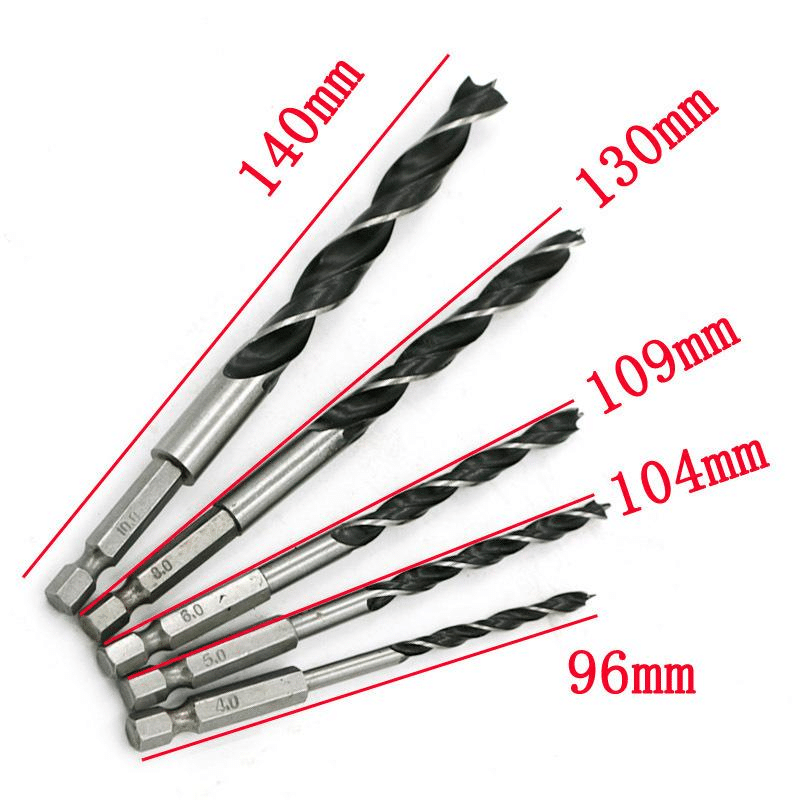Drill bits are essential tools in various industries and DIY projects, allowing precise and accurate hole drilling in different materials. Among the wide array of drill bit sizes available, the #7 drill bit holds a significant place. In this article, we will delve into the intricacies of the #7 drill bit size, exploring its dimensions, conversion to inches and millimeters, and provide a comprehensive drill bit size chart for your reference.

1. What Size is a number 7 drill bit?
A number 7 drill bit typically has a diameter of approximately 0.201 inches or 5.11 millimeters. However, it’s important to note that drill bit sizes can have slight variations depending on the manufacturer. It’s always a good practice to double-check the specifications provided by the manufacturer or refer to a drill bit size chart for precise measurements.
The numbering system used for drill bits can be confusing, especially for beginners. The #7 drill bit size falls within the number system commonly used in the United States, which ranges from #80 (smallest) to #1 (largest). As the number decreases, the drill bit size increases, meaning a #7 drill bit is larger than a #80 drill bit.
2. Dimensions of a #7 Drill Bit:
To ensure accurate drilling, it is crucial to understand the physical dimensions of a #7 drill bit. In general, the diameter of a #7 drill bit measures approximately 0.201 inches or 5.11 millimeters. However, it is important to note that drill bit sizes can slightly vary depending on the manufacturer.
3. Conversion of #7 Drill Bit Size to Inches and Millimeters:
For those who prefer working with different measurement systems, it is essential to understand the conversion of the #7 drill bit size to inches and millimeters. A #7 drill bit equates to approximately 0.201 inches or 5.11 millimeters. This conversion is essential when working with international standards or using tools calibrated in different units.
4. #7 Drill Bit Size Chart:
To provide a comprehensive overview of drill bit sizes and their corresponding dimensions, here is a drill bit size chart including the #7 drill bit:
Drill Bit Number | Drill Bit Size (Inches) | Drill Bit Size (Millimeters)
——————————————————————————
#80 | 0.0135 | 0.34
#70 | 0.0280 | 0.71
#60 | 0.0400 | 1.02
#50 | 0.0700 | 1.78
#40 | 0.0980 | 2.49
#30 | 0.1285 | 3.26
#20 | 0.1610 | 4.09
#10 | 0.1935 | 4.92
#7 | 0.2010 | 5.11
#5 | 0.2055 | 5.22
#3 | 0.2130 | 5.41
#1 | 0.2280 | 5.79
Please note that the dimensions provided in this chart are approximate, and there might be slight variations depending on the manufacturer.
5. Common Applications of the #7 Drill Bit:
The #7 drill bit size finds application in various projects and industries. Its versatility makes it suitable for tasks such as woodworking, metalworking, and general construction. It is often used for pilot holes, clearance holes, and creating openings for screws or bolts.
6. Selecting the Right Drill Bit:
When choosing a drill bit, it is essential to consider factors such as the material being drilled, the desired hole size, and the specific task at hand. The #7 drill bit size is ideal for medium-sized holes, but it is crucial to adjust the drill bit size based on the requirements of your project.
7. Safety Precautions and Tips:
Using drill bits requires adherence to safety precautions to prevent accidents or damage. Always wear appropriate protective gear, including safety goggles and gloves. Ensure the workpiece is secured properly, and do not apply excessive force while drilling. It is also advisable to consult the manufacturer’s guidelines for specific recommendations.
The #7 drill bit size is a valuable tool in the arsenal of any DIY enthusiast or professional tradesperson. By understanding its dimensions, conversion to inches and millimeters, and referring to the drill bit size chart, you can confidently select the appropriate drill bit for your projects. Remember to prioritize safety and precision while working with drill bits, and consult manufacturer guidelines when in doubt. With this comprehensive guide, you are now equipped with the knowledge to tackle drilling tasks efficiently and effectively.